IMPRESSIONIST
ART
Impressionism started in Paris, France. In the mid-19th century the Salon was
the only route for an artist to display his work and to achieve legitimate recognition. The Salon system was
challenged in the 1860s. In 1863 60% of the art failed to be approved by the conservative tastes of the Salon
judges. That same year Napoleon III created a special Salon to display the rejected art, known as ‘Salon des
Refues’ (The Salon of the Rejected). The Impressionist style flourished from the early 1860s to the late
1880s.
EDOUARD MANET (1832-1883)
French painter. One of the first 19th century artist to paint modern
life. Pivotal figure in the transition from Realism (representational art) to Impressionism. It is
largely recognized that ‘modern’ painting begins with Manet.
“Le Dejeuner Sur L’herbe” (‘The
Luncheon on the Grass’, 1863)
Oil on Canvas (Musee d’Orsay, Paris)
Manet’s ‘Luncheon’ painting outraged the conventional senses of many. No
mythical theme or allegorical message (standard for nude subjects). Realist look - almost photograph-like
quality. Rejected by the Salon jury of 1863, Manet displayed Le Dejeuner Sur L’herbe in the Salon des Refuses
(‘exhibition of rejects’) which sparked public notoriety and controversy.
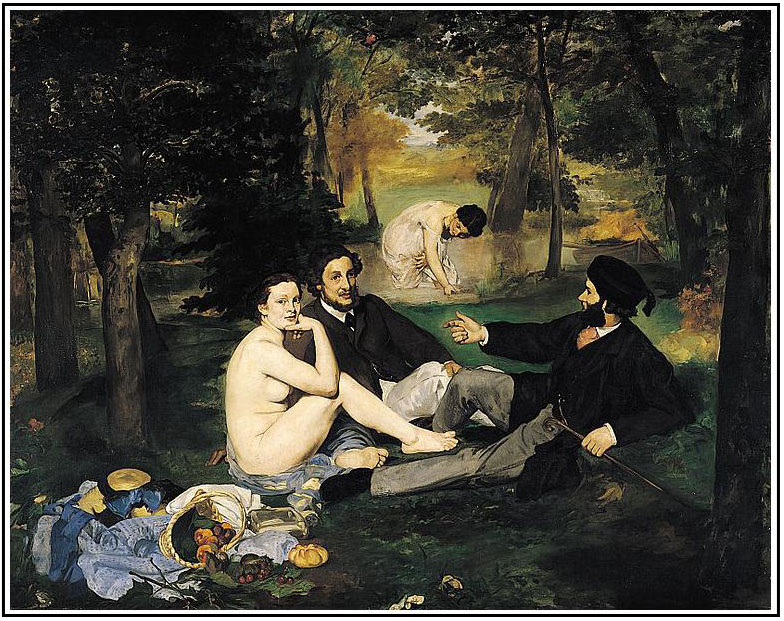
“Olympia” (1863)
Oil on Canvas (Musee d’Orsay, Paris)
The painting caused shock and astonishment because the woman looks at the viewer with
a provocative gaze with the look and demeanor of a prostitute. Manet was inspired by Titian’s
Venus of
Urbino.
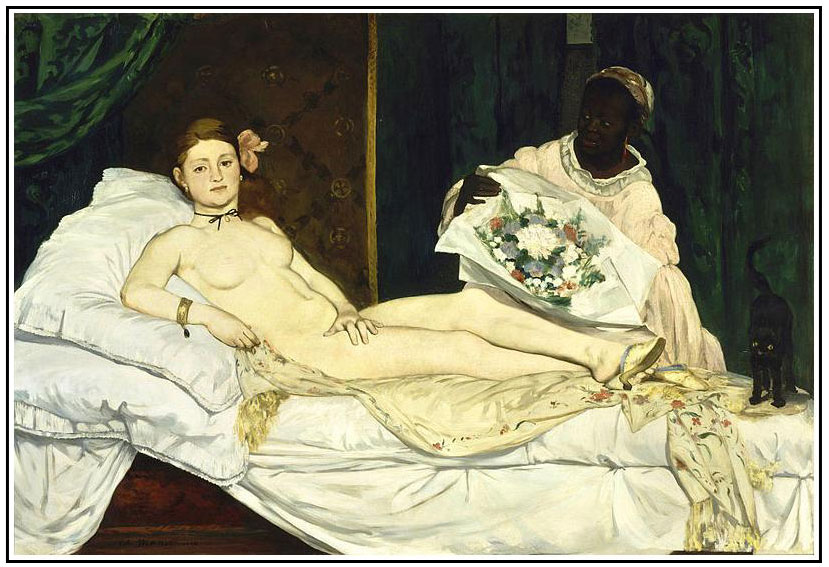
“The Races at
Longchamp” (1866)
Oil on Canvas (Art Institute of Chicago)
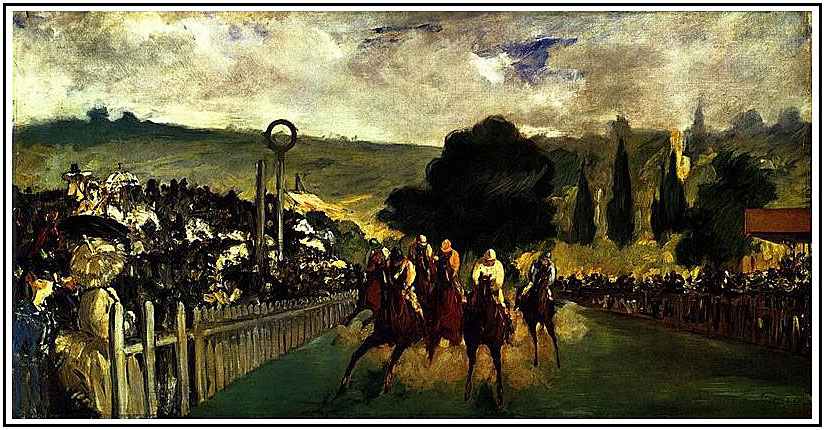
“A Bar at the
Folies-Bergere” (1882)
Oil on Canvas (Courtauld Gallery, London)
Manet’s last major work. It depicts a scene in the Folies Bergere nightclub in
Paris.
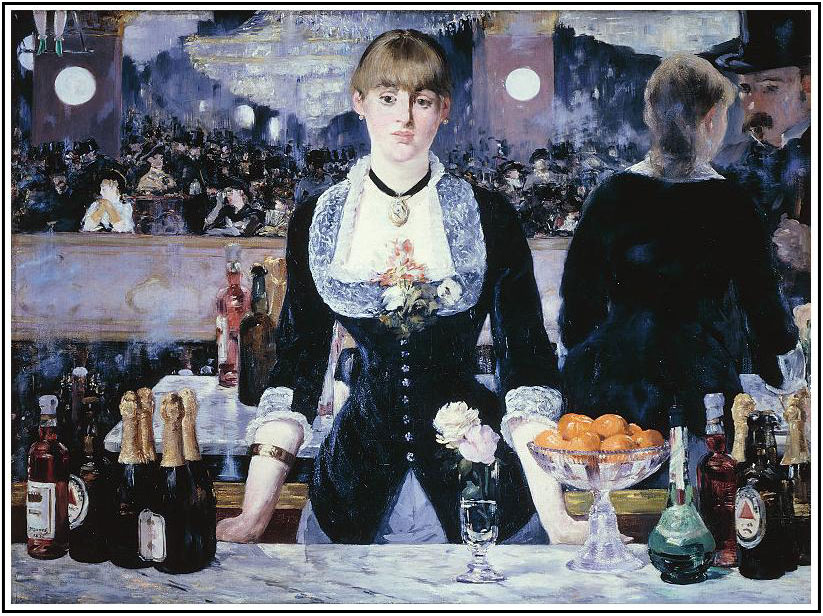
CLAUDE MONET (1840-1926)
Early founder of French Impressionist painting. The term "Impressionism" is
derived from the title of his painting “Impression, Sunrise”. Monet began commissioned work at the age of
15. Being an admirer of Turner, Manet was fascinated by the effects of
light on his subjects. To best capture these effects he painted outside, known as en plein air ('in the
open air') landscape painting (also due to the new innovation of the tube of paint which permitted convenient
outdoor painting). Monet had an enthusiasm in painting un-idealized outdoor scenes as they appeared to his
mind’s eye – to express one’s perceptions before nature. Monet effectively demonstrated that human beings do not
see objects, but instead see light itself.
The Salon viewed Manet’s work to be unfinished
or a ‘lack of finish’ (as compared with a Delacroix). Critics were enraged at
Manet’s lack of finish and consider him a lazy artist. Manet’s paintings had visible brush strokes which
reflected his lack of interest in detail.
“View at
Rouelles, Le Havre” (1858)
Oil on Canvas (Private collection)
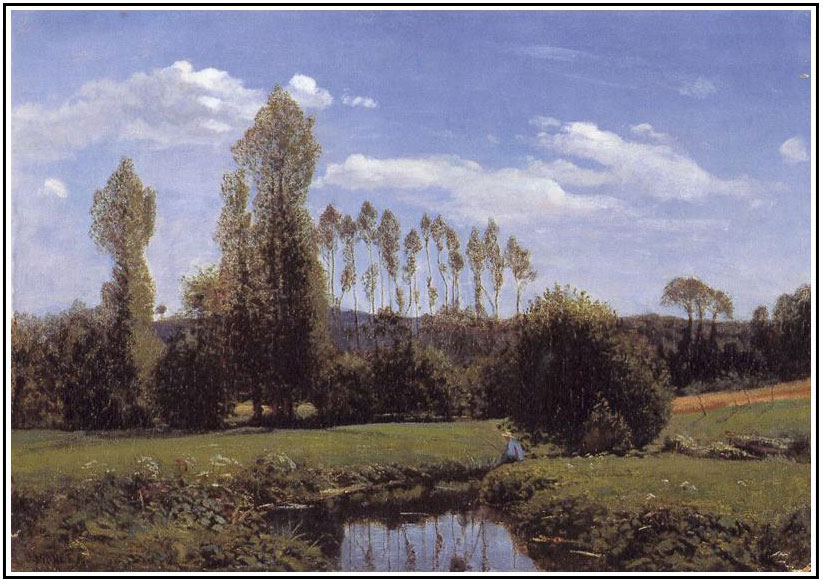
“Impression,
Sunrise” (1872)
Oil on Canvas (Musee Marmottan Monet, Paris)
The painting that gave rise to the name of the ‘Impressionist’
movement.
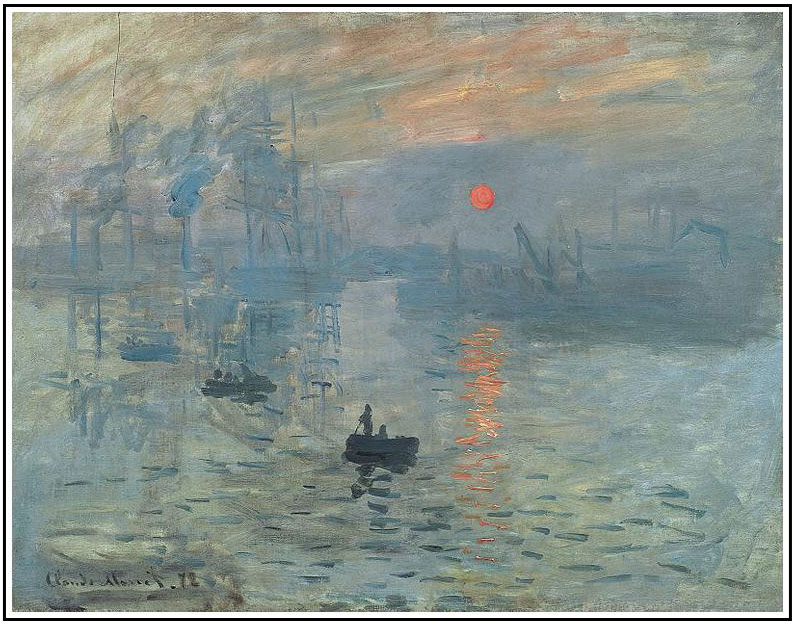
“Arrival of the
Normandy Train, Gare Saint-Lazare” (1877)
Oil on Canvas (The Art Institute of Chicago)
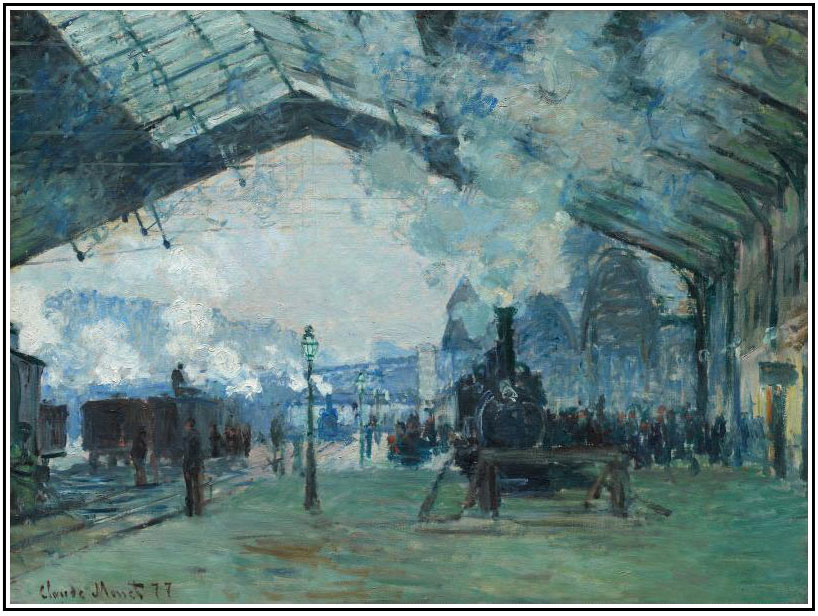
“Wheatstacks (End of Summer)” (1891)
Oil on Canvas (Art Institute of Chicago)
Wassily
Kandinsky is influenced by Monet’s
Wheatstacks.
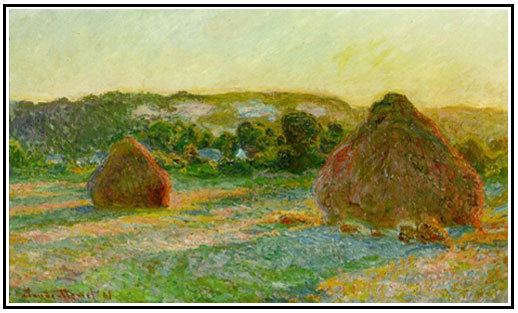
“Water Lilies and
the Japanese Bridge” (1899)
Oil on Canvas (Princeton University Art Museum)
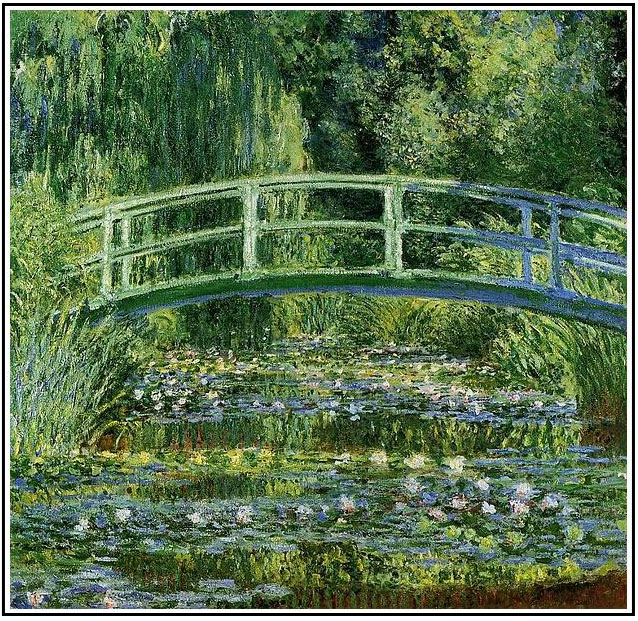
"The Irises in
Monet's Garden” (1900)
Oil on Canvas (Musee d’Orsay, Paris, France)
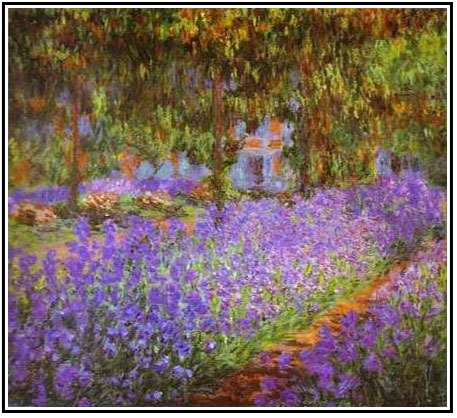
CAMILLE
PISSARRO (1830-1903)
Danish-French Impressionist and Neo-Impressionist painter. Known as the “dean
of the Impressionist painters” due to his “wisdom and balance, kind and warmhearted personality”. Cezanne
said, “he was a father to me. A man to consult and a little like the good Lord.” Characteristics:
colored shadows and sharp brush strokes. Interested in the subject of labor – people working.
“Boulevard des
Italiens, Morning, Sunlight” (1897)
Oil on Canvas (National Gallery of Art, Washington, D.C.)
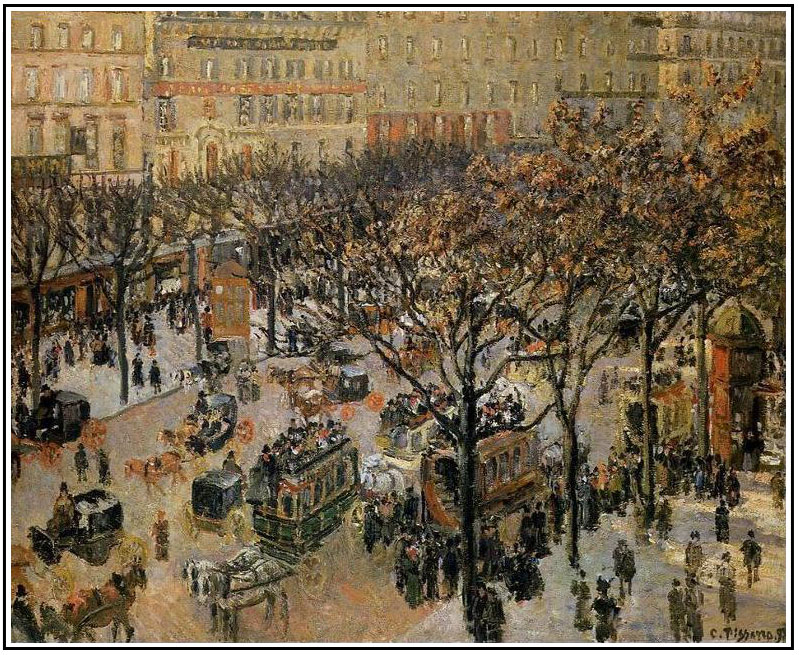
“Lower Norwood
Under Snow” (1870)
Oil on Canvas (National Gallery, London)
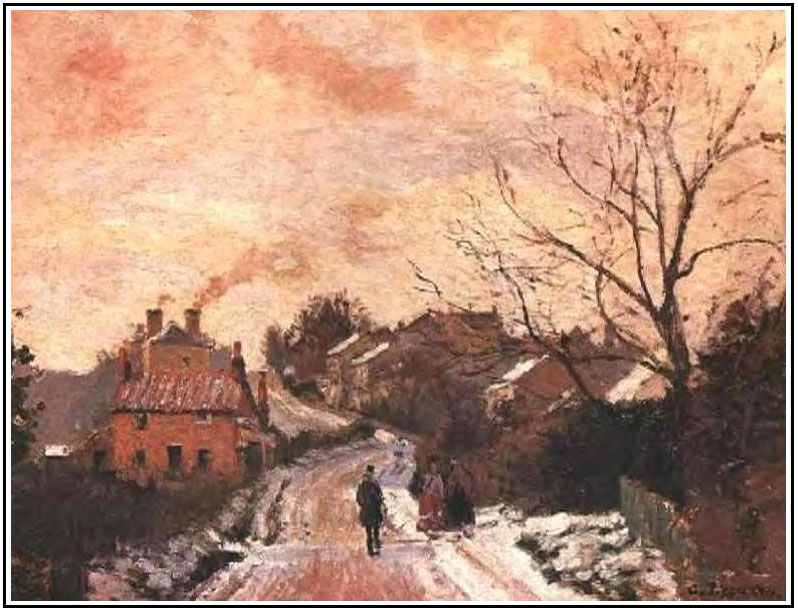
“The Hay
Wagon” (1879)
Oil on Canvas (Private Collection)
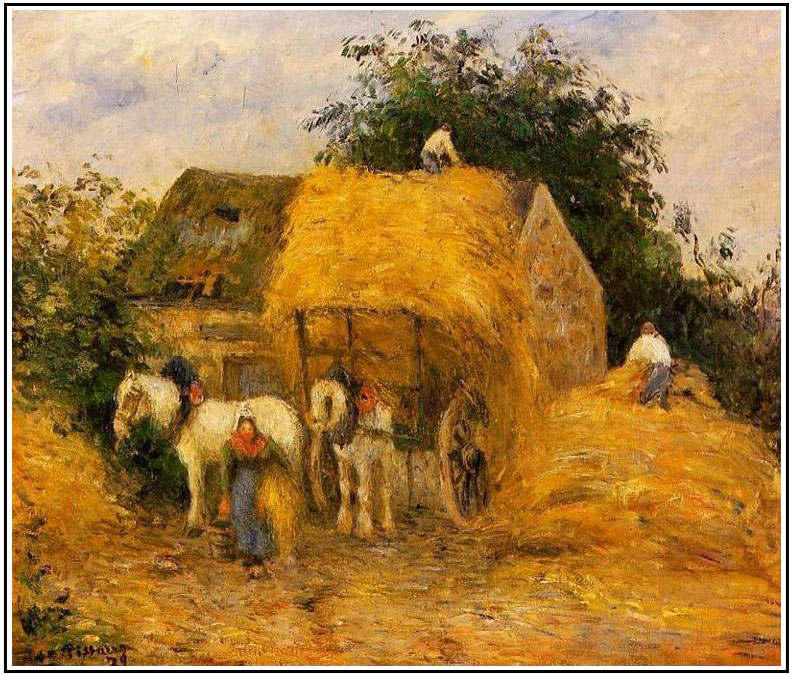
PIERRE AUGUSTE
RENOIR (1841-1919)
French artist and innovator of the Impressionist style. It has been said,
“Renoir is the final representative of a tradition which runs directly from Rubens (Baroque) to Watteau (Rococo).” Characteristics:
light-hearted scenes from real life; pretty children; adults at leisure; flowers and beautiful nudes. Renoir’s
respect for tradition was well known. It was his love of the Louvre that prompted him to say "It is in the
museum that one learns to paint". By contrast, his fellow impressionist Pissarro argued that the Louvre
should be "burn to the ground". Pissarro’s provocative opinion was not untypical at the time. It was the time
when various theories of art were widely discussed. Every day, at venues, such as the local cafe, artist and
intellectuals gathered to discuss artistic issues. In general, Renoir avoided these discussions. To Renoir, the
job of the artist was to produce art, not to theorize about it. He complained that many of his fellow painters
stayed up so late talking about art theory that they were too tired to get up in the morning to
paint.
“The
Swing” (1876)
Oil on Canvas (Musee d’Orsay, Paris)
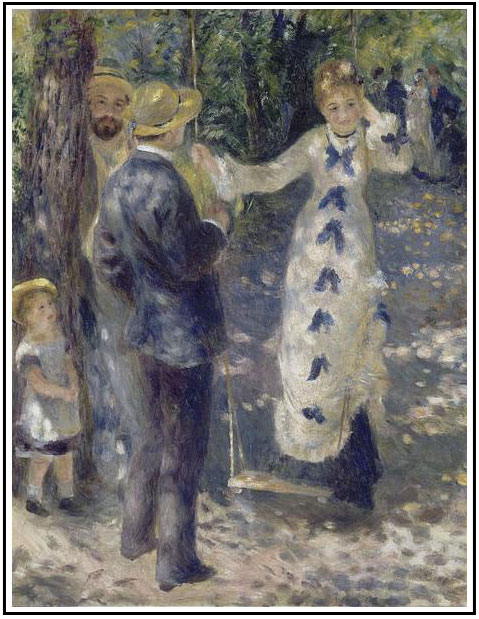
“Dance at Le
Moulin de la Galette” (1876)
Oil on Canvas (Musee d’Orsay, Paris)
One of Impressionism’s most celebrated masterpieces. Painting depicts a typical
Sunday afternoon at Moulin de la Galette in the district of Montmartre, Paris. In the late 19th century,
working-class Parisians would dress up and spend time there dancing, drinking and eating galettes into the
evening.
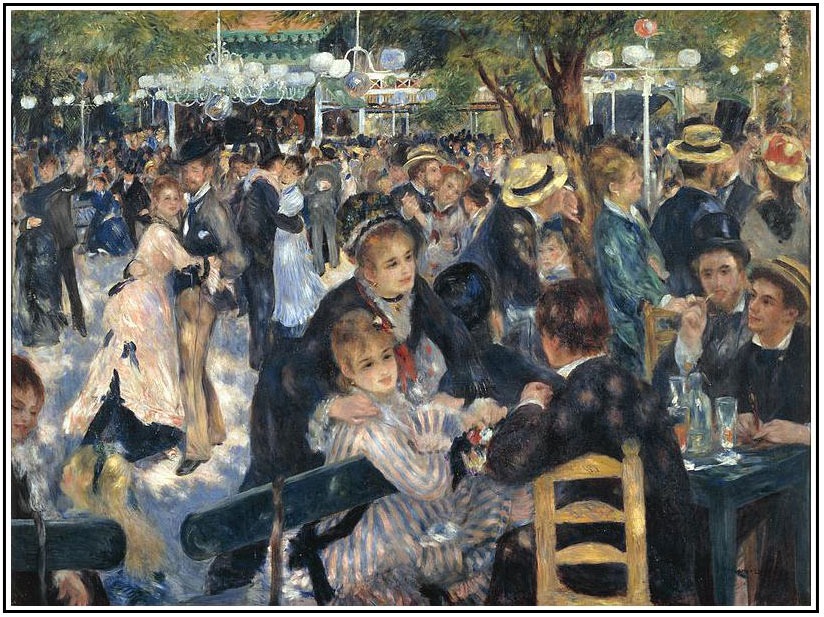
“Luncheon of the
Boating Party” (1881)
Oil on Canvas (The Phillips Collection, Washington, D.C.)
Actor Edward G. Robinson (1893-1973) is quoted as saying: “For over thirty years I
made periodic visits to Renoir's ‘Luncheon of the Boating Party’ in a Washington museum, and stood before that
magnificent masterpiece hour after hour, day after day, plotting ways to steal it."
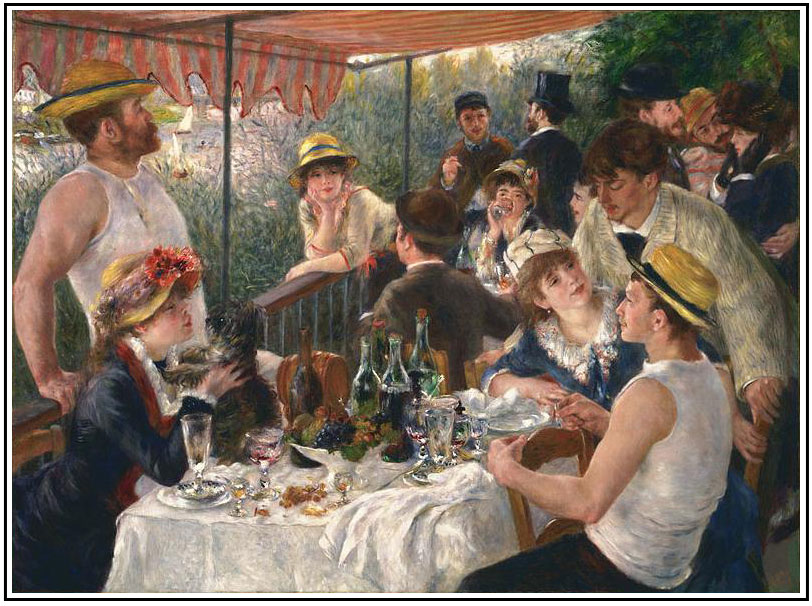
“After the
Bath” (1888)
Oil on Canvas (Private Collection)
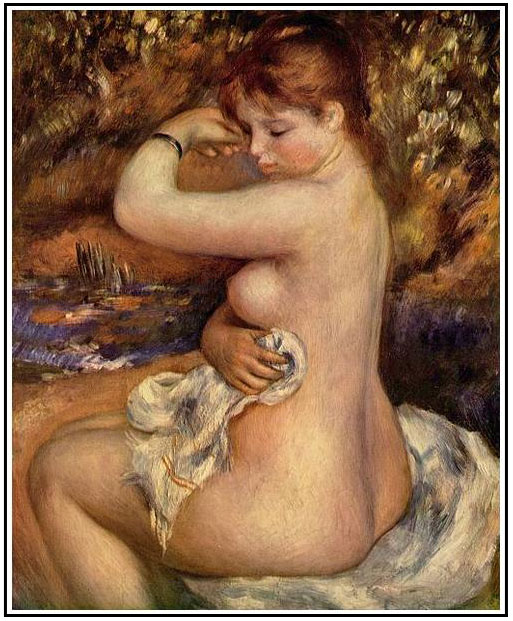
“Two Girls in
Black” (1881)
Oil on Canvas (Pushkin Museum of Fine Arts, Moscow)
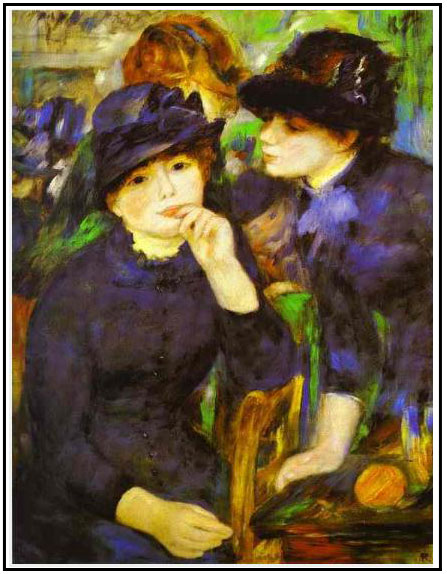
EDGAR
DEGAS (1834-1917)
French artist. Regarded as one of the founders of Impressionism. Degas
rejected the term and preferred the be called a realist. Master at depicting movement, whether in dances or
racecourse subjects. His portraits are notable for their psychological complexity and for their portrayal of
human isolation.
“Woman Seated
beside a Vase of Flowers” (1865)
Oil on Canvas (Metropolitan Museum of Art, New York City)
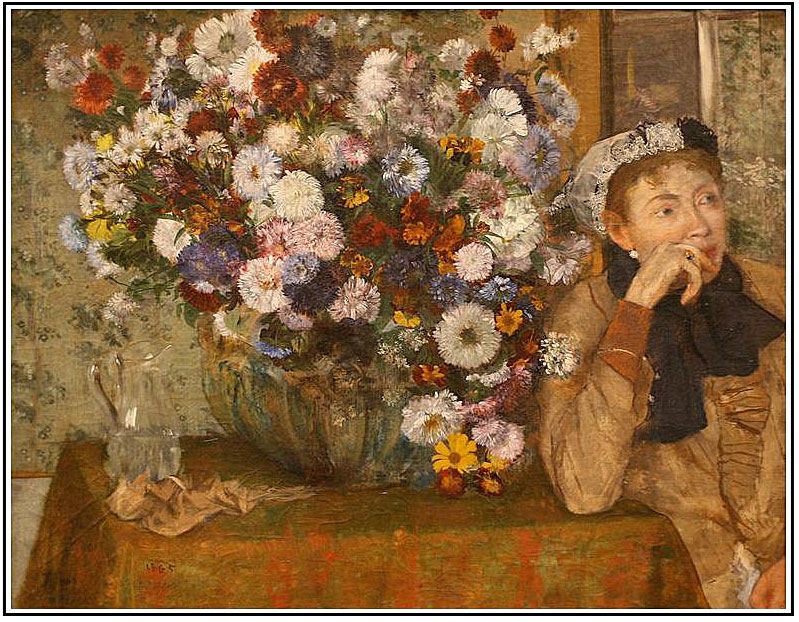
“Racehorses at
Longchamp” (1871)
(Museum of Fine Arts, Boston)
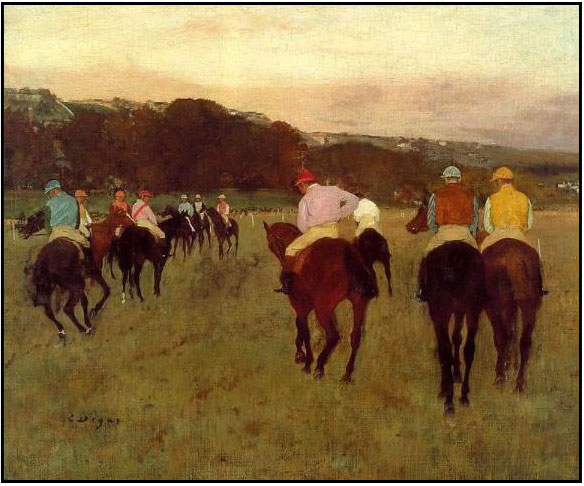
“L’Absinthe” (1876)
Oil on Canvas (Musee d’Orsay, Paris)
The woman in the painting is Ellen Andree, actress, and the man is Marcellin
Desboutin, a painter, printmaker and bohemian. They are at the Café del la Nouvell-Athenes in Paris. At
its first showing the picture was panned by critics who called it “ugly and disgusting”. It was put into
storage until an 1892 exhibit where it was booed off the easel. Many English critics viewed it as a warning
lesson against absinthe and the French in general. Later, art critics revised their harsh position, assigning
a moral lesson to the painting, claiming that “the picture is merely a work of art, and has nothing to do with
drink or sociology.”
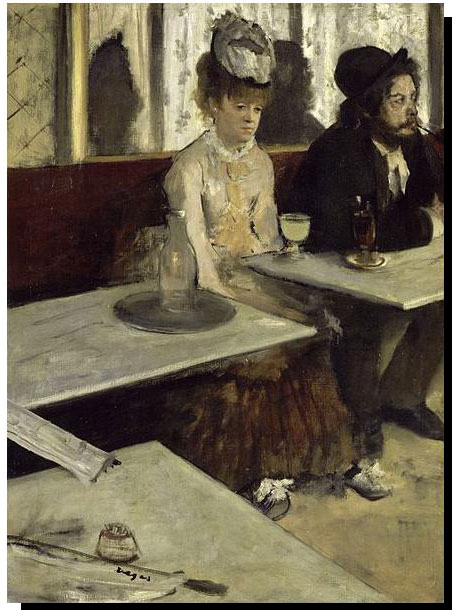
“The
Star” (1877)
Oil on Canvas (Musee d’Orsay, Paris)
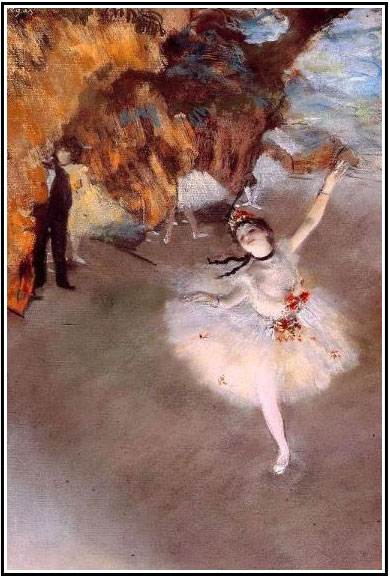
“The
Rehearsal” (1877)
Oil on Canvas (Private Collection)
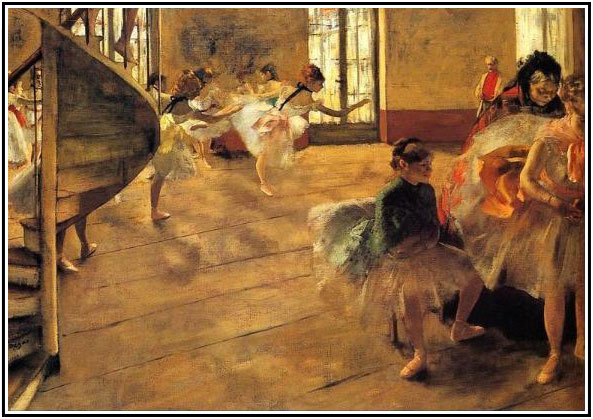
“The
Tub” (1886)
Oil on Canvas (Musee d’Orsay, Paris)
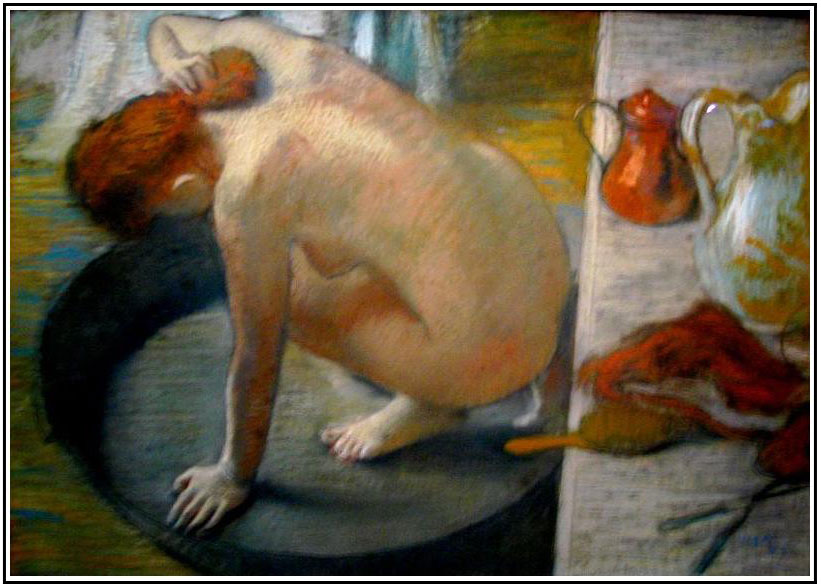
MARY
CASSATT (1844-1926)
American painter and printmaker. Cassatt lived much of her adult life in France,
where she first befriended Edgar Degas and later exhibited among the Impressionists. Cassatt often created images
of the social and private lives of women, with particular emphasis on the intimate bonds between mothers and
children.
"Summertime" (1894)
Oil on Canvas (Terra Foundation for American Art, Chicago)
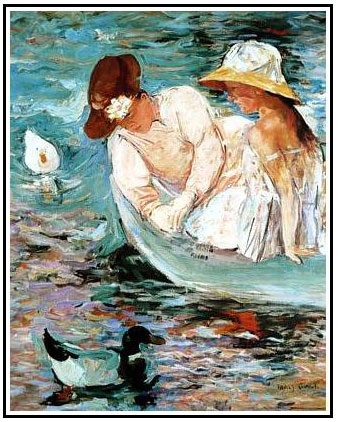
EARLY MODERN
ART (Post
Impressionism)
Modern art begins with the heritage of painters like Georges Seurat, Paul Cézanne,
Paul Gauguin, Vincent van Gogh and Georges Seurat.
GEORGES
SEURAT (1859-1891)
Early French Post-Impressionist artist. Created “Pointalism” or “Divisionism”
(painting small dots of un-mixed color). Seen from a distance the points blend into a new color. Very
laborious process, unlike the ‘spontaneous’ approach of the Impressionist artist. Historian William Everdell
claimed that Modernism in painting began with Seurat's Divisionism, the "dots" used to paint "A Sunday Afternoon on
the Island of La Grande Jatte."
“Sunday After on the Island of La Grande Jatte” (1886)
Oil on Canvas (The Art Institute of Chicago)
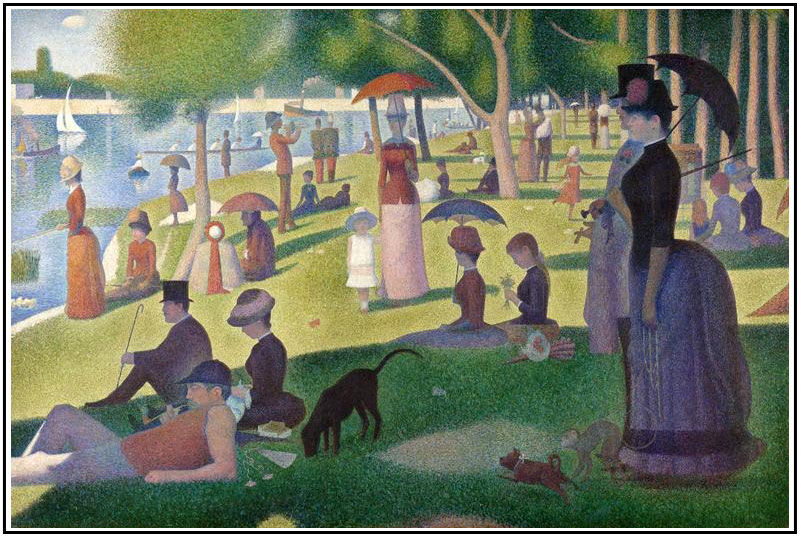
“Bathers at
Asnieres” (1884)
Oil on Canvas (National Gallery, London)
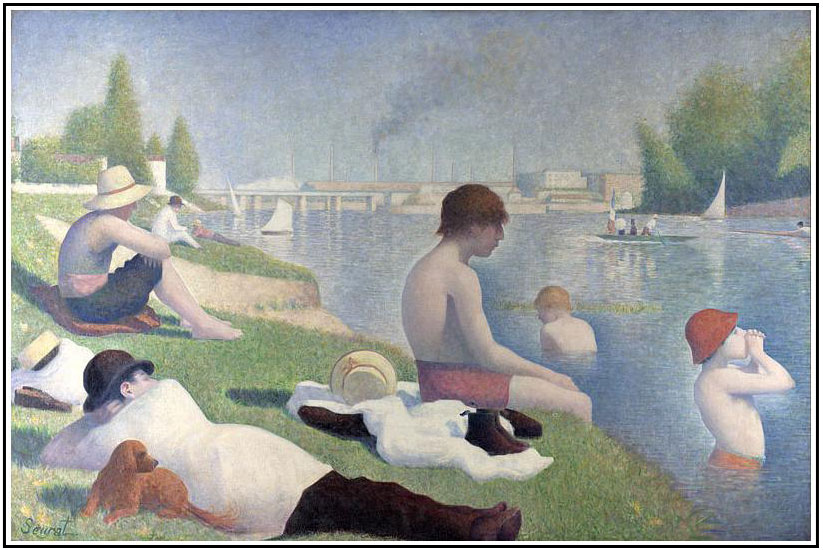
PAUL CEZANNE (1839-1906)
French Post-Impressionist artist. Worked with Pissarro. Became frustrated
with the Impressionist’s lack of form and structure. Cezanne believed that color is all we see – brought
strong, intense colors to his pictures. Cézanne’s later works of three-dimensional forms has been attributed
as the primary influence that led to Cubism (early 20th century). Both Matisse and Picasso are said to have
remarked that Cézanne "is the father of us all."
“Les Joueurs de
Carte” (‘The Card Players’, 1894-1895)
Oil on Canvas (Private Collection)
The Card Players is a series of oil paintings; five paintings in the series.
One version of The Card Players was sold in 2011 to the Royal Family of Qatar for a price variously estimated at
between $250 million and $300 million, making it the most expensive work of art ever sold.
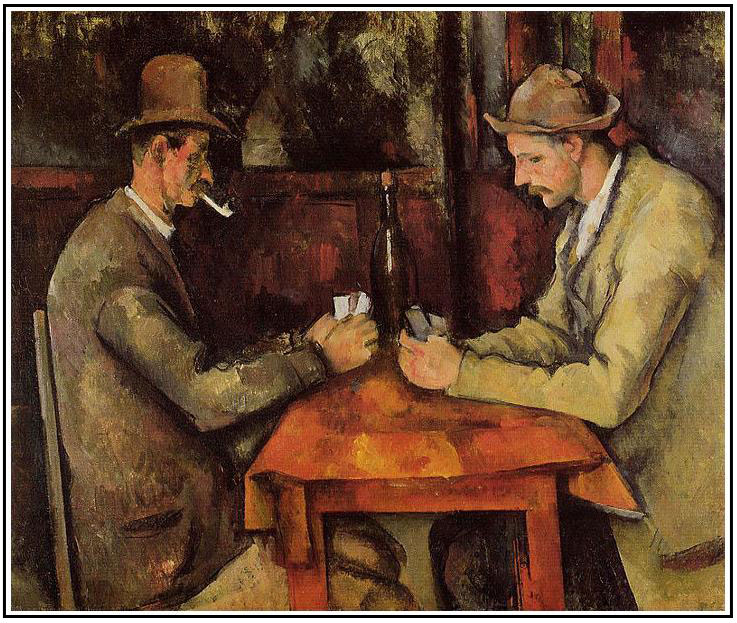
“The Lac
D’Annecy” (1896)
Oil on Canvas (The Courtauld Gallery, London)
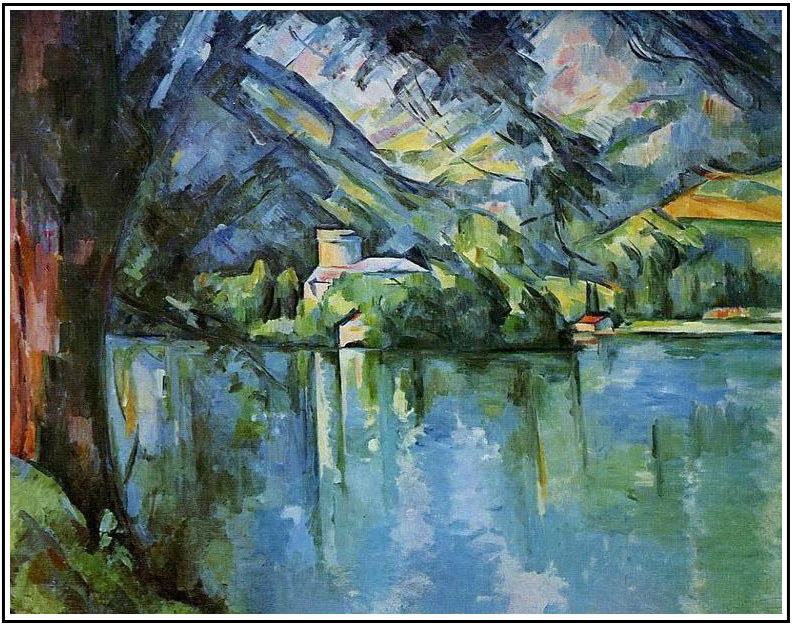
“Apples and
Oranges” (1895-1900)
Oil on Canvas (Musee d’Orsay, Paris)
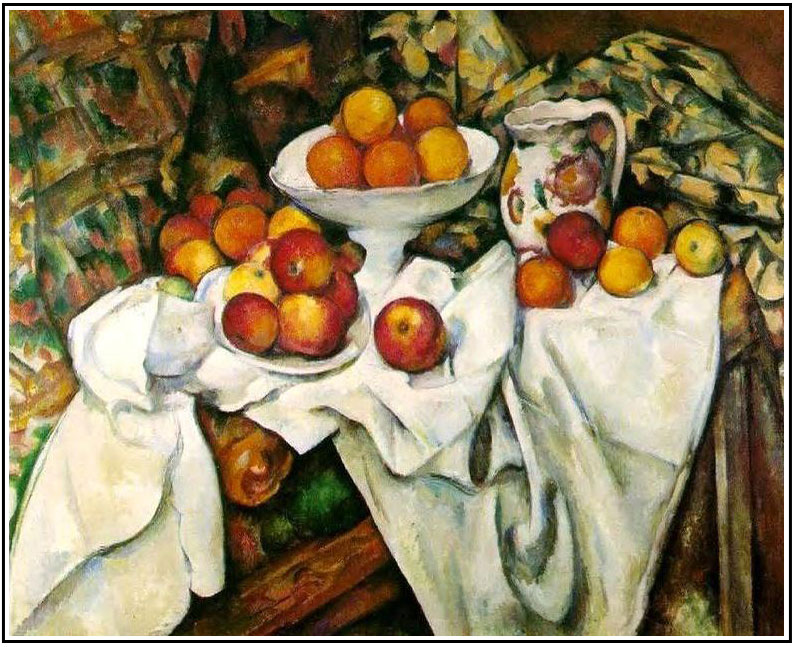
“Mont
Sainte-Victoire” (1885-1887)
The Montagne Sainte-Victoireis is a mountain in southern France,
overlooking Aix-en-Provence.
It became the subject of a number of Cezanne’s paintings. The mountain was
Cezanne’s favorite subject and his perspective of it forever change art – transforming spatial voids into
animate planes, static reality into a network of visual energy. Cezanne substituted the
perspective created by line with a backward-forward pulsation of color that made the two-dimensional canvas
vibrate with the three-dimensional fullness of nature.
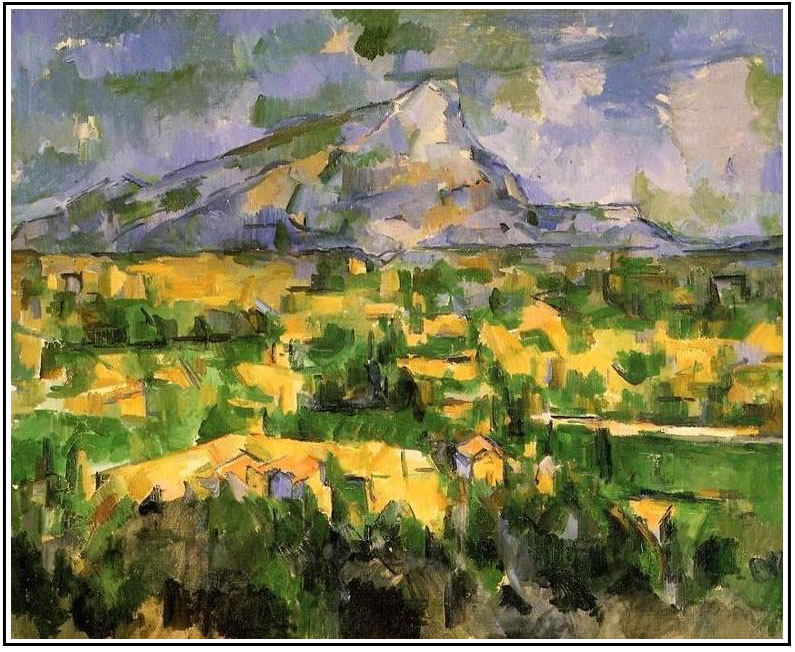
“Chateau Noir” (1904)
Oil on canvas, National Gallery of Art, Washington D.C.
Final period of Cezanne’s artistic exploration. Works like “Chateau Noir”
inspired Pablo
Picasso to make his first cubist paintings – based on
Cézanne's idea that all depiction of nature can be reduced to three solids: cube, sphere and
cone.
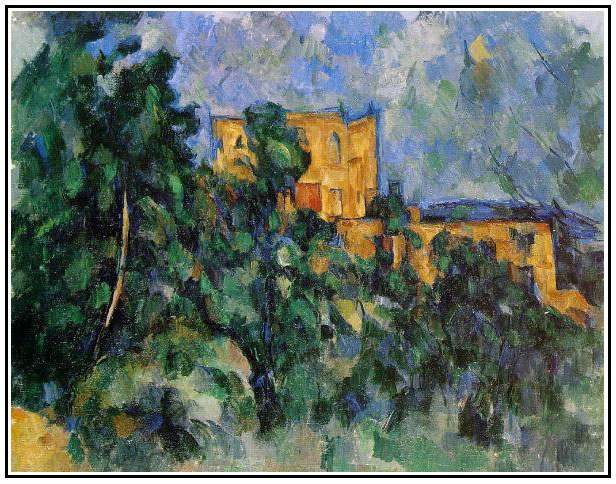
PAUL GAUGUIN
(1848-1903)
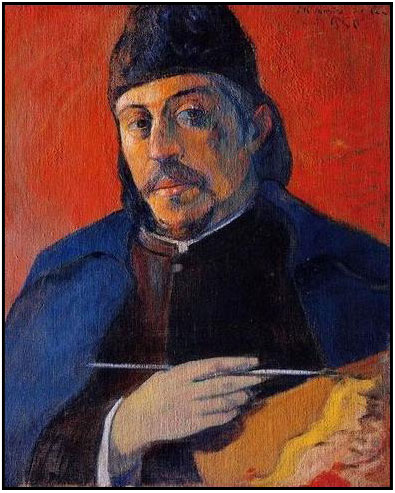
French Post-Impressionist artist. Color was a
strong theme in Gauguin’s work. In 1891 Gaugin left France for the South Pacific to get away from the
“claustrophobia” of civilization. His work was not well appreciated until after his death. Gauguin influenced many
French avant-garde and modern artists such as Pablo Picasso and Henri Matisse.
“Nafeaffaa Ipolpo
Aka When Will You Marry” (1892)
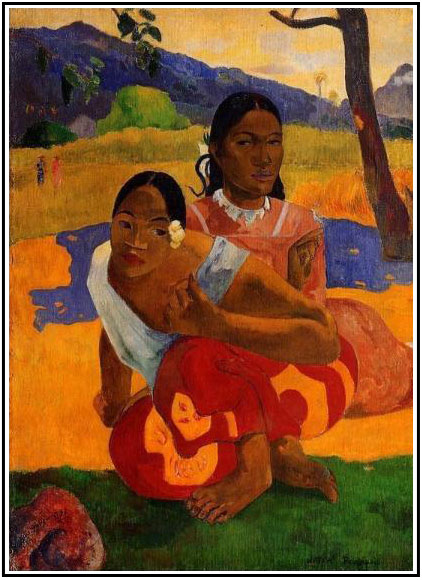
“Sunday (Mahana no Atua)”
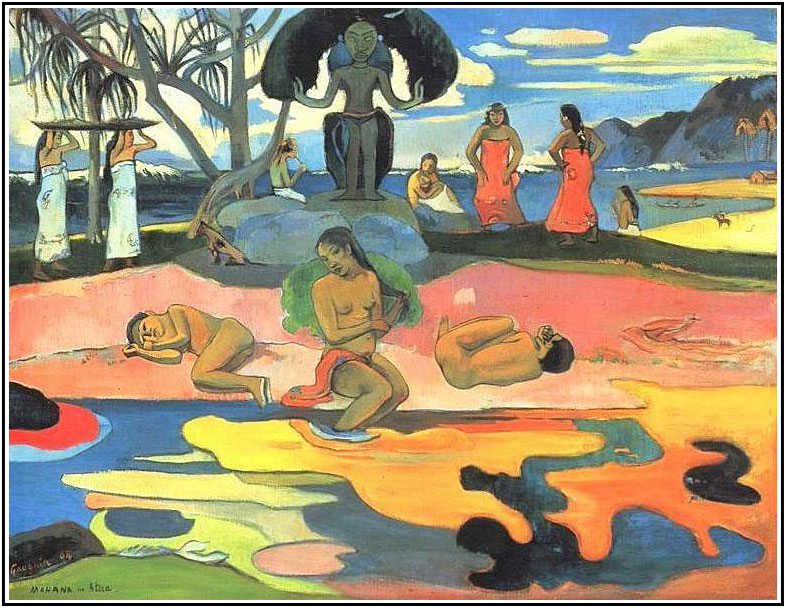
“Two Tahitian Women”
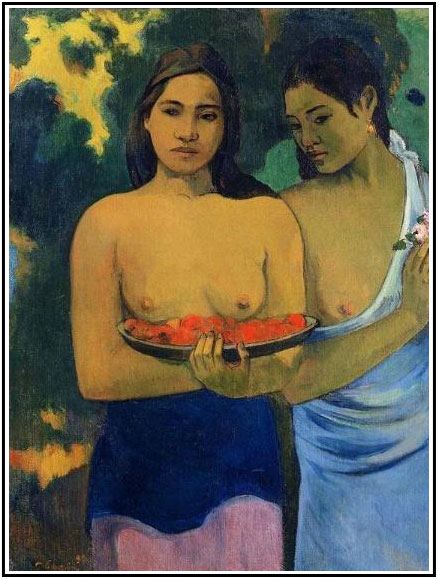
VINCENT VAN
GOGH (1853-1890)
Post-Impressionist Dutch artist. Moved to Paris; influenced by Pissarro.
Van Gogh’s style: juxiposition of saturated color never before seen in Western art; broad brushstrokes. Color
has special meaning (yellow = rebirth). His greatest work occurred in the last two years before his
death. Suffered mental difficulties. Van Gogh struck Gauguin, an admirer of the artist, with a
razor. Regretting his behavior, Van Gogh cut off his ear. In 1890, at age 37, van Gogh shot
himself.
“The Starry Night” (1889)
Oil on Canvas (The Museum of Modern Art, New York City)
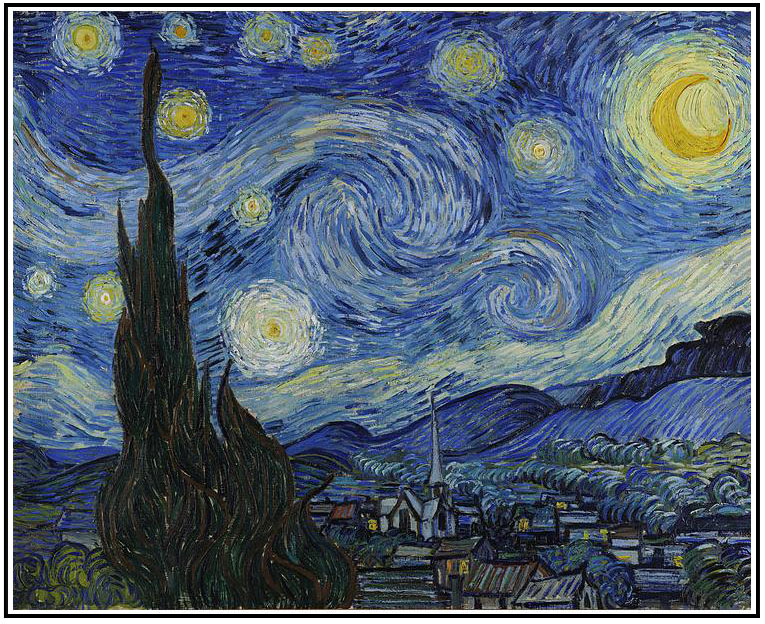
“Still
Life: Vase with Twelve Sunflowers”
(1888)
Oil on Canvas (Neue Pinakothek, Munich)
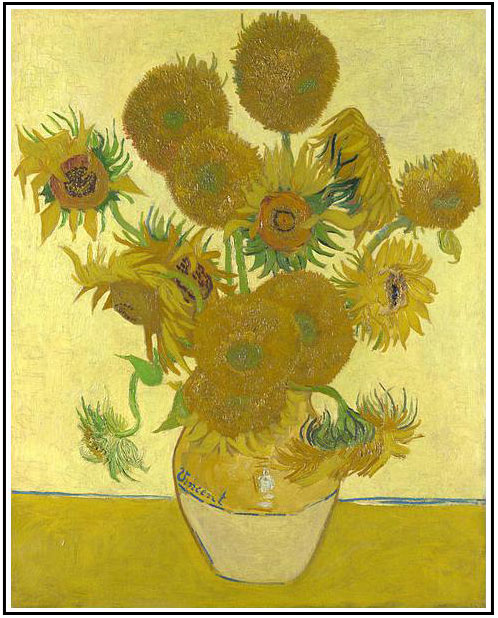
“Portrait of Dr.
Gachet” (1890)
Oil on Canvas (Private Collection)
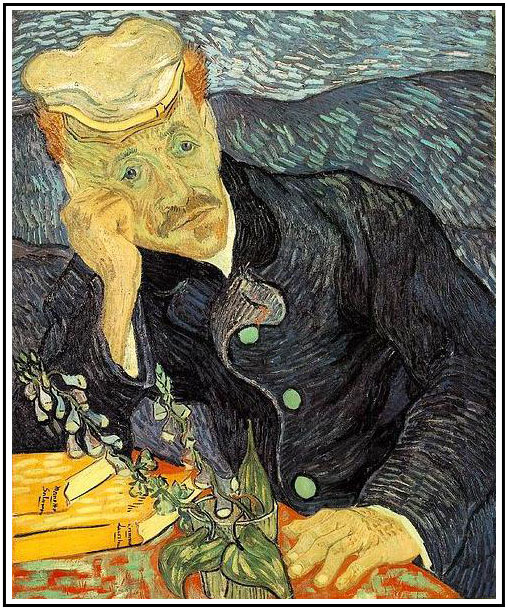
“Self-Portrait” (1889)
Oil on Canvas (Nation Gallery of Art, Washington, D.C.)
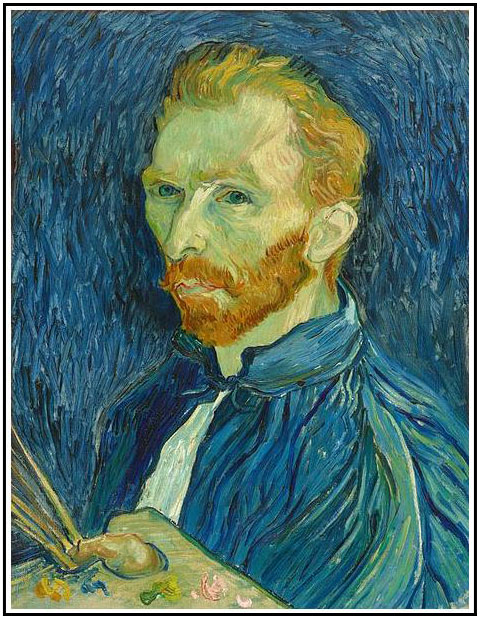
“Wheat Field with
Cypresses” (1889)
Oil on Canvas (National Gallery, London)
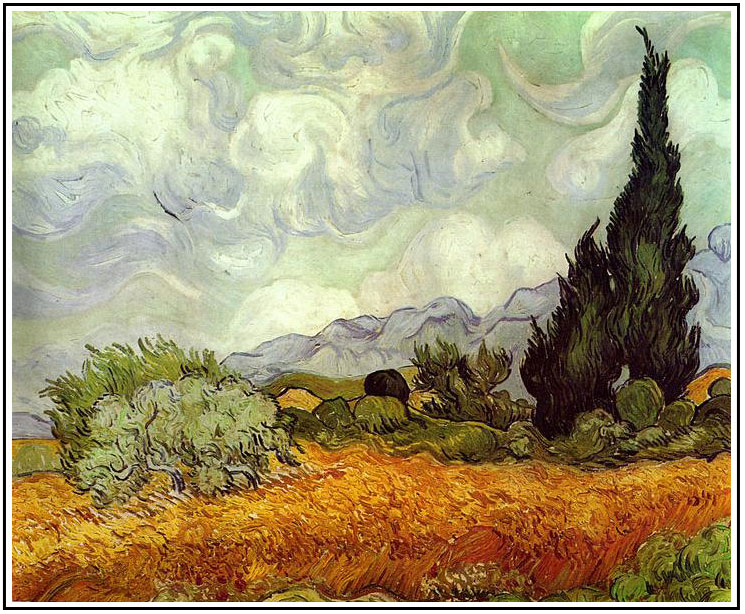
“Irises” (1889)
Oil on Canvas (Getty Center, Los Angeles)
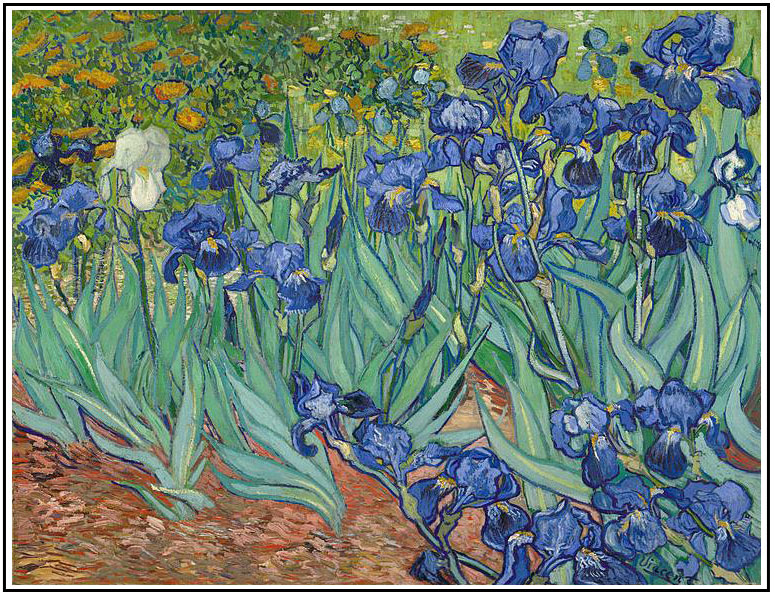
“Wheat Field with
Crows” (1890)
Oil on Canvas (Van Gogh Museum, Amsterdam)
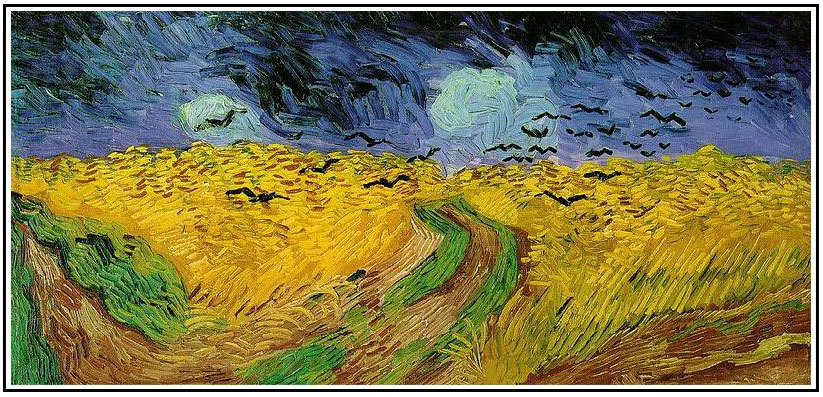
z
| 









































